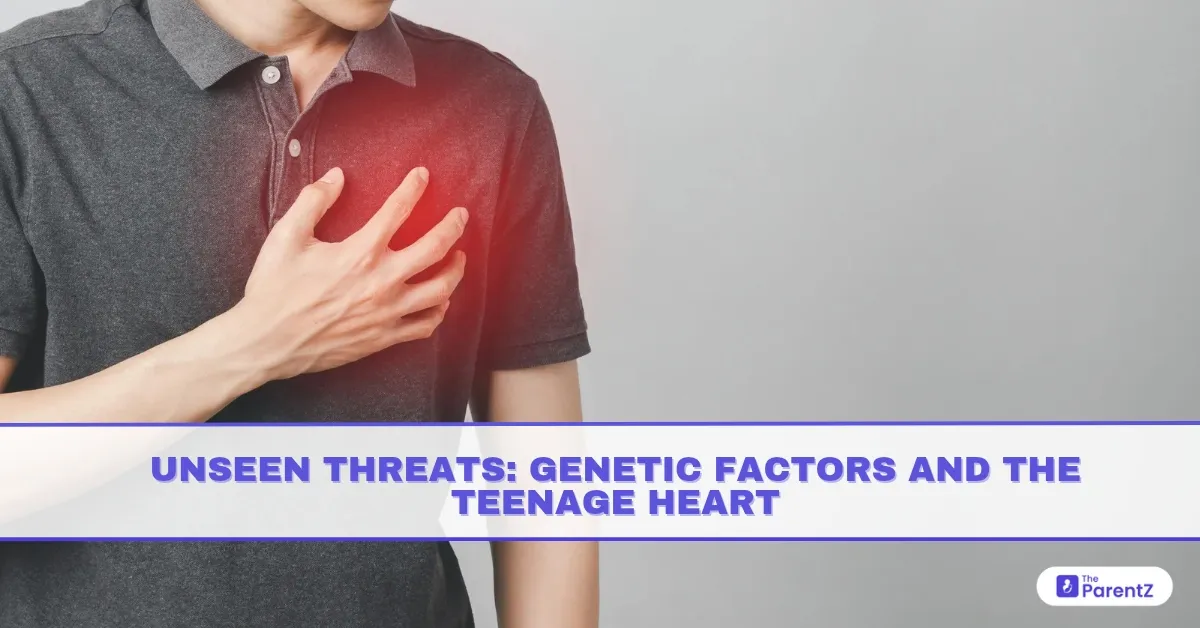When we think of heart disease, we often picture middle-aged adults with sedentary lifestyles or high cholesterol. Rarely do we imagine a seemingly healthy teenager as being at risk. But beneath the surface of youthful energy and rapid growth, there may lie silent genetic factors affecting the structure, rhythm, or function of the heart long before any symptoms appear.
The truth is, heart disease can begin in adolescence, and in some cases, even earlier. Genetics plays a powerful role in determining how the teenage heart functions, responds to stress, and adapts to physical activity. In a country like India, where awareness is still low, the early signs are often missed, sometimes with tragic consequences.
Why Focus on the Teenage Heart?
Adolescence is a period of massive physiological transition:
- Hormonal surges impact metabolism and circulation
- The heart and blood vessels are adjusting to a growing body
- Increased demands from sports and school-related stress add to the load
If a teen carries a genetic predisposition to heart disease, these transitions may unmask silent abnormalities like:
- Structural heart defects
- Arrhythmias (irregular heartbeats)
- Cardiomyopathies (heart muscle diseases)
- Cholesterol disorders
In many cases, these conditions remain undetected until a sudden collapse during physical activity, a fainting episode, or, tragically, sudden cardiac death.
Common Genetic Heart Conditions Seen in Teenagers
1. Hypertrophic Cardiomyopathy (HCM)
- Thickening of the heart muscle, especially the left ventricle
- Often inherited in an autosomal dominant pattern
- May cause chest pain, breathlessness, fainting, or sudden death during sports
- Early signs can be subtle or absent
2. Long QT Syndrome (LQTS)
- A disorder of the heart’s electrical system
- Can lead to fast, chaotic heartbeats (torsades de pointes)
- May present as fainting spells, seizures, or sudden death
- Triggered by stress, exercise, or even loud noises
3. Familial Hypercholesterolemia (FH)
- A genetic condition causing extremely high levels of LDL (“bad”) cholesterol from a young age
- Increases risk of early-onset heart disease and stroke
- May be identified by cholesterol deposits around the eyes or tendons (xanthomas)
4. Congenital Heart Defects (CHDs)
- Structural abnormalities like atrial septal defect or coarctation of the aorta
- Some may go unnoticed in infancy and only present during the teen years with fatigue, shortness of breath, or exercise intolerance
5. Marfan Syndrome
- A connective tissue disorder that can weaken the aorta, leading to aneurysms
- Teens are often tall and lanky with long fingers, flexible joints, and may have vision problems
- Requires regular cardiac monitoring
Warning Signs to Watch For in Teens
While many teens with genetic heart risks are asymptomatic, some early signs include:
- Unexplained fainting, especially during exercise or stress
- Dizziness or palpitations
- Chest pain (not always due to anxiety or muscle strain)
- Shortness of breath disproportionate to activity
- Family history of sudden cardiac death under age 50
- High cholesterol or blood pressure in a young child
- Irregular heartbeats felt during rest or sleep
These should never be dismissed as “normal teenage changes.” A careful medical evaluation is always better than regret.
The Role of Family History
In genetic heart diseases, what runs in the family can run in the child. A thorough family history is one of the most powerful tools in early detection.
Key questions to ask:
- Has anyone in the family died suddenly or unexpectedly at a young age?
- Are there family members with heart disease, high cholesterol, or pacemakers?
- Are there known inherited conditions like Marfan Syndrome, FH, or arrhythmias?
If the answer is yes, first-degree relatives, including teens, should be screened.
How Can Teenagers Be Screened?
Depending on symptoms and family history, doctors may recommend:
- ECG (Electrocardiogram): Detects rhythm disorders
- Echocardiogram: Visualizes heart size, shape, and motion
- Lipid Profile: Measures cholesterol and triglycerides
- Exercise Stress Test: Monitors heart response to physical exertion
- Genetic Testing: Especially when a known hereditary condition exists in the family
It is important to note: routine mass screening of all teens is not currently recommended, but targeted screening, especially in families with history, is life-saving.
Lifestyle Still Matters — Even with Genetics
While we cannot change genes, we can shape how they express themselves. Epigenetics, the science of how lifestyle affects gene activity, offers hope.
Encouraging healthy habits during adolescence can mitigate genetic risk:
- Balanced diet low in saturated fats and sugars
- Regular physical activity (under medical guidance if a heart condition exists)
- Stress management and mental well-being
- Avoidance of smoking, alcohol, and energy drinks
- Regular health check-ups
For teens with diagnosed genetic conditions, early lifestyle modification and medical supervision can significantly reduce complications later in life.
Mental and Emotional Aspects
Being told that one “might” be at risk for heart problems can trigger anxiety or fear in teens. It’s important that conversations around genetic risks are:
- Non-alarming and empathetic
- Supportive and include solutions (e.g., check-ups, activity adjustments, healthy goals)
- Framed around strength, resilience, and empowerment, not vulnerability
Teens should be taught that knowing their risk is not a sentence, it’s a superpower that enables early action.
The Road Ahead: Awareness and Prevention
In India, the conversation around teen heart health is still evolving. Cultural barriers, lack of routine pediatric cardiology support, and low awareness mean that genetic heart diseases often go undetected until it’s too late.
By incorporating school health programs, family history surveys, and youth health check-ups, we can move from reactive treatment to proactive protection.
Conclusion: Look Beneath the Surface
Teenagers may seem invincible on the outside, but their hearts may carry inherited vulnerabilities we cannot see. Understanding the genetic basis of heart health, watching for early signs, and encouraging safe, active lifestyles can protect young lives from unforeseen tragedy.
Let’s build a culture where cardiac health is a part of adolescent wellness, not just adult medicine.








Be the first one to comment on this story.